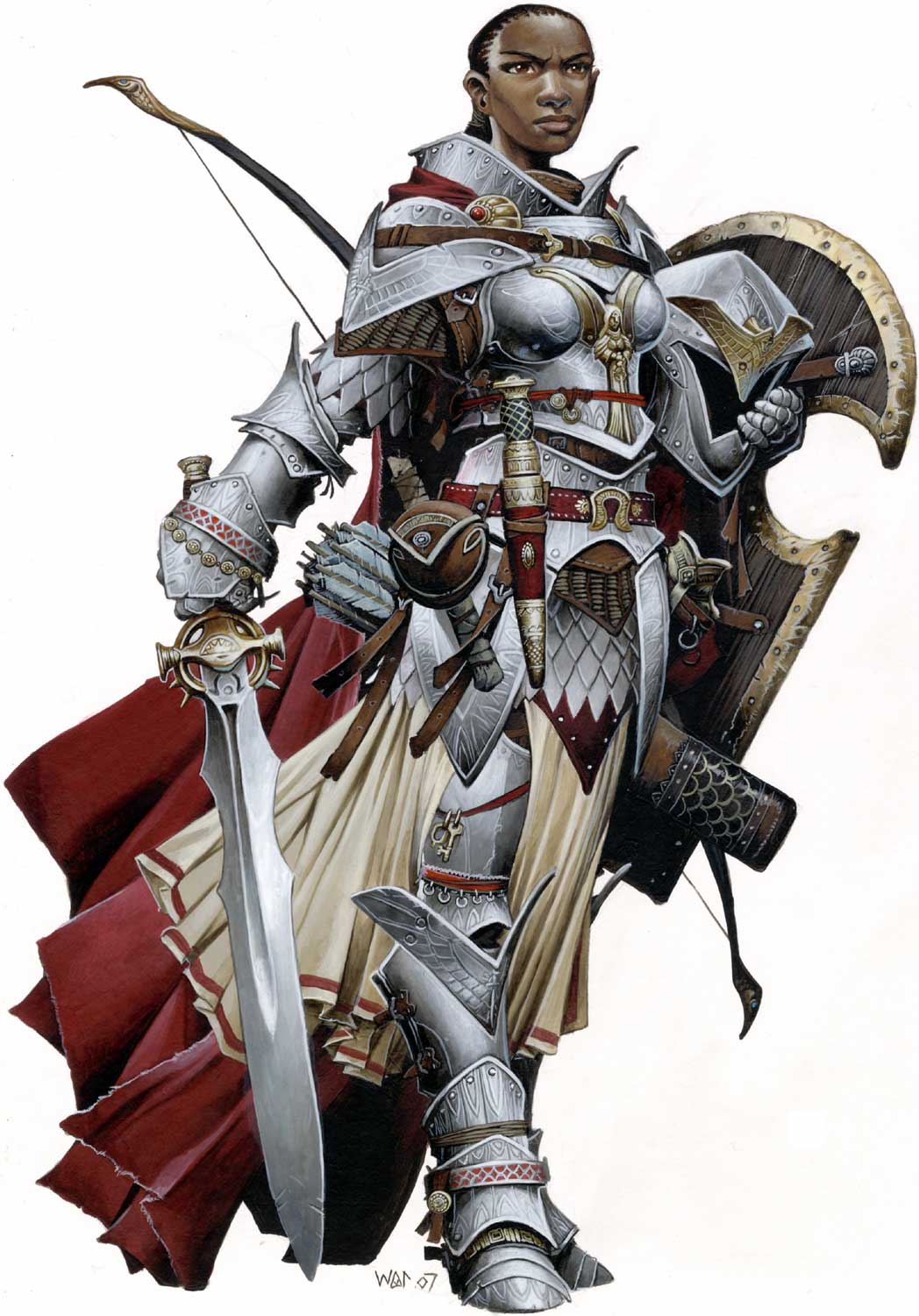The Wizards of the Coast survey indicated that just 19 percent of female gamers played on a monthly basis (2000). [...] Studies of children (Child and Child 1973) aged 12 and younger found that girls have more interest in imaginative play than do boys. Role-playing involves many of the attributes that are common in other female-youth-oriented games [...] So why aren't there more women involved in role-playing games? SourceTresca believes that it comes from a variety of reasons, but the three most critical being duration of play, males' imaginative play lasts longer and requires more people than females require. However, MMORPG's are far more popular among women because they take less time and require fewer people, and the results are far more tangible than the abstractness of tabletop RPG's. Secondly as Tresca notes, and Allison Perry also reinforces, that the cyclical nature of any male dominated industry is a deterring factor for female players. This means, for Tresca that the quantity of males playing, and the fact that they often play to get away from their wives and children sometimes creates a chauvinistic and sexist atmosphere. Perry, also agrees saying that women don't see other female gamers very often, so they don't want to contribute to the hobby either.
Perry also states that there are other reasons including trash talk and the sexism of other players. I would like to think that it doesn't happen but it does as evidenced here:A lot of the reasoning behind women's lack of participation in video games originates from the circular and self-defeating logic of “I don't see other women playing video games, so I will not play video games either.” From advertisements to Facebook posts, from editorials to everyday gossip, the out-dated yet “popular perception of gamers [as] either pimply-faced teenaged boys or 30-something males living in their parents' basements” discourages many women from wanting to participate in the gaming phenomenon (Shields). And if this archetype was not discouraging enough, the “[ridiculous] testosterone-swollen, iron-chested men” that stand front row center on many of the games' covers may “remind [potential female gamers] that [the games] were not really designed for [them]” (Edmonds). Source
If you don't have the stomach to watch the video that's fine, but here is a quick summary. Cross Assault is an online reality show sponsored by Capcom. There are two teams of 5 - one of Street fighter players and another of Tekken players - who are competing for a cash prize. One of the players on Team Tekken, Miranda Pakozdi, is being verbally assaulted by her team Captain, Aris Bakhtanians - on day one of the week long competition. Over the course of these awkward 14 minutes, Bakhtanians asks Pakozdi for her bra size, proposes that she and another female player engage in a mud wrestling contest, calls her a bitch innumerable times, makes fun of her for not being mean enough and finally complains about the lack of a video camera in the female bathroom. Justifiably so, Pakozdi leaves the competition shorty thereafter.
While this may not totally have as much to do with what I want to say about RPG's perse; it does shine a light on why there is a lack of female gamers and role-players today. Don't get me wrong, there are still a tremendous amount of "girl-gamers" who know how to hold their own against rude, immature and sexually frustrated teens. However, it is much different when you are playing RPG's, especially tabletop pen and paper ones.
More often than not, when you play games like Dungeons and Dragons you are not playing with some "internet randos" you are playing with your friends. They are right there in the room with you and there is no giant megaphone to hide behind. From my experience there is significantly less blatant sexism in tabletop RPG's than there is elsewhere. That is entirely possible that the game lies in the collective imagination of the players, and the art that is fostered by the game creators is often in stark contrast to other, more visceral games:
As can be seen here, there is still armor with breasts in it, but at least the character is wearing armor. I have always said that role-playing games are one of the greatest things that we can get young people into. They teach a variety of skills: basic math, imagination, cooperation, social skills, and public speaking - as well as having a good time without electronics - things that are more and more important in the digital age. If, as was stated earlier, women have more aptitude for imaginary play than men - I think there is a definite place for more female RPG'ers. I think that if the cycle can be broken we can see more and more immersion of both genders in some of our favorite pastimes.
There are many factors that affect how we see and play these games, and why we play them. I think that the industry as a whole still has work to do, but is making strides to change - or so I feel. I think games like Halo: Reach are great examples, as Perry shows, of women who can cosplay and not appear to be "booth babes": Source
Not only does the armor make sense this time, but it also is true to form and displays a level of commitment beyond most men. LARPing is also, technically, part of RPG's and I think as long as everyone can participate and not feel like they are sex objects; or lowlifes who crawled from their parents' basements, I think that the hobby as a whole will flourish. The next, and final installment; miniatures and how they fit into this puzzle.



No comments:
Post a Comment